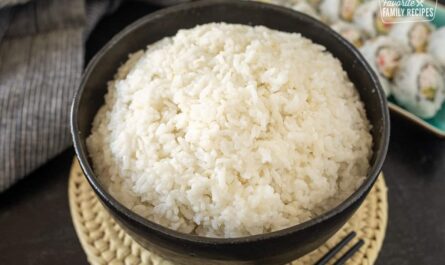Sushi is a culinary art that harmoniously blends flavors and textures to create a delightful experience. A crucial part of this dish is the sushi rice, which owes much of its deliciousness to salt. The subtle inclusion of salt in sushi rice contributes significantly to the taste balance, enhancing both the rice and its toppings.
The meticulous preparation of sushi rice is what sets apart superior sushi from the rest. While the rice itself is important, understanding the role of salt can elevate your sushi-making skills to a new level.

Understanding the Importance of Salt
Salt plays a pivotal role in enhancing flavors in a variety of dishes. In sushi rice, it is used not only to season the rice but also to balance the sweet and umami flavors. Without the right amount of salt, the rice could taste bland, affecting the overall sushi experience.
The Science Behind Salt’s Role
Beyond taste, salt has a chemical purpose in sushi rice. It helps in tightening the rice grains, making them stickier and perfect for molding.
Ideal Salt Quantity
The quantity of salt is crucial. Typically, 1 to 2 teaspoons of salt is added to the rice vinegar mixture used in sushi rice.
How to Perfectly Salt Sushi Rice
The process of salting sushi rice involves careful attention to timing and quantity. Your goal is to ensure the salt enhances without overpowering.
Step-by-step Process
Start by rinsing your rice thoroughly. Cook it using a superior pot for sushi rice for best results. Once cooked, mix the rice vinegar, sugar, and salt until dissolved. Gently fold this mixture into the rice.
Regional Variations and Techniques
Different Japanese regions have unique twists on sushi rice seasoning.
Kanto versus Kansai
In the Kanto region, sushi rice might be slightly saltier compared to the Kansai region where it tends to be sweeter.
Choosing the Right Salt
The type of salt can influence the final flavor. From table salt to sea salt, each offers distinct attributes.
Recommended Salt Types
Sea salt is often recommended due to its mineral content and subtle flavor. Avoid using iodized salt as it might impart a metallic taste.
Potential Mistakes to Avoid
Missteps in the sushi rice preparation can drastically alter the taste.
Common Errors
Adding salt after the rice has cooled can result in uneven seasoning. Always add it to the vinegar mix.
Troubleshooting Tips
If your rice ends up too salty, balance it with a touch more sugar. Consult our tools guide for additional cooking tips.
The Cultural Significance of Sushi Rice
In Japanese culture, the sushi rice isnt just a filler. It’s a carefully crafted complement to fresh seafood, showcasing the essence of Japanese cuisine.
Creating Homemade Sushi
Mastering sushi rice allows you to craft restaurant-quality sushi at home. Delve deeper into the varieties of rice used in sushi for a thorough understanding.
Experimenting with Ingredients
Innovative sushi chefs often experiment with different salt types or add-ins like kombu or sake for subtle flavor nuances.
Health Considerations
While salt is essential, its overconsumption can lead to health issues. Balance is key.
Mindful Consumption
Moderation ensures that your sushi is both delicious and healthier.

FAQ Section
Q: Why is salt important in sushi rice?
A: Salt balances the flavors in the rice, enhancing the overall taste experience.
Q: Can I use regular table salt in sushi rice?
A: Its best to use sea salt or kosher salt as they dissolve better and enhance flavor without imparting a metallic taste.
Q: How can I fix overly salted sushi rice?
A: You can balance too much salt by adding a little more sugar or vinegar to the rice mixture.
This article contains affiliate links. We may earn a commission at no extra cost to you.




